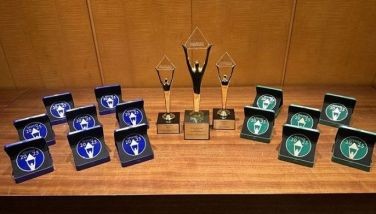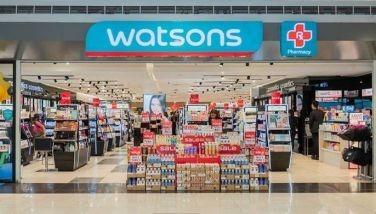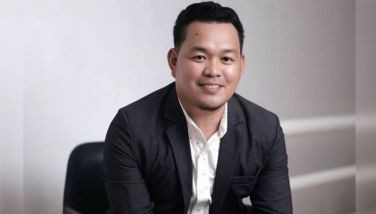MacArthur’s return

On October 20, 1944, MacArthur made good his pledge to return and with a formidable armada landed in Leyte. It was only days later that the greatest sea battle in the Pacific was fought, and the Japanese Navy was destroyed.
We were already sure of MacArthur’s return for earlier, on September 21, American carrier planes bombed and strafed targets in Manila. And in the afternoon, at around 2 p.m., the approach of a hundred or so carrier planes was announced by the quiet roar of their engines, which grew louder as they covered the sky. Aircraft guns in the city were fired, and the sky was filled with the black puffs of their explosion, but fortunately none of the planes was hit.
In June of that year, the universities in Manila reopened and I enrolled for the two-year premed course at the University of Santo Tomas. Our classes were held in the old UST campus in Intramuros, beside the old Sto. Domingo church. The main campus in España was then the camp where Allied civilians were interned.
We were having Nippongo class that morning. Our teacher was a young naval officer. The officers were always distinguishable from the enlisted men. All wore boots and double shirts of white, over which they wore the usual khaki. All of them had sidearms and swords. From his class, I remember only one phrase, Kore wa hon desu – This is a book.
The first planes came roaring very low, just above the acacia trees. Then the anti-aircraft guns atop Letran College nearby started popping. The windows of our classroom were wide open. The planes were flying so low, and we could see the pilots waving from open cockpit planes. They had no stars and stripes, instead they had a white star with two white strips on both sides. We knew at once they were American and we started stomping our feet and shouting. Our Japanese teacher left. That was the last day of school.
In September, food was already difficult to get. I had commuted every so often to Rosales, Pangasinan, where my rich cousin had a farm, and I brought to Manila as much rice as I could physically carry, which was usually half a sack.
Every morning, I got up early, and from our house on Antipolo Street in Sta. Cruz I tried to catch the streetcar to Plaza Lawton. If I did not make it, I walked all the way to Intramuros. That took about an hour.
There was very little vehicular traffic in Manila at the time, except for the trucks and the cars that belonged to the Japanese. The wealthy Filipinos had what we called the dokar, a fancy kalesa with rubber wheels, usually drawn by a pony retired from the race track.
Transport from Manila to the province was on crowded trucks or on the flat railway cars from La Union. They usually carried Japanese troops or commercial goods.
By this time, medicines in Manila had become very scarce and native substitutes were being widely used. There was no more tobacco, and for those who managed to get the leaf. they usually smoked it wrapped in thin paper torn from telephone books. Every plot of land in Manila was planted to talinum, a vegetable, or camote, And since there was no garbage collection, pits were dug, and the garbage thrown in them was burned.
The buy-and-sell market flourished in Divisoria. Here, one could find a lot of secondhand clothes, shoes, and even furniture and silverware from upper-class families. But the real luxuries were the dried meat and fish from the provinces.
Old rubber tires and canvass were made into shoes, and fancy carved and painted wooden shoes for both men and women became popular.
Since there were no more imported films, the first-class theaters in Manila, which were not air-conditioned, staged Tagalog adaptations of the classic dramas, with popular actors and actresses in key roles. Filipino musicians also played in these theaters.
Sometime in early November, a cousin, myself, and my mother left a starving city and walked all the way to Rosales, Pangasinan, 180 kilometers away. It took us one week to get there. The houses along the highway had all been abandoned because the people expected the fighting to soon resume.
At night, we slept in the abandoned houses, sometimes using their firewood and cooking utensils. We could hear the Japanese marching, retreating to the mountains of Northern Luzon.
In the daytime, the highway to the north was alive with people fleeing Manila. By then, the skies were completely dominated by American planes. Most of them I’m sure were land-based, the Mustangs with their silver wings and the P-38 Lightning with twin fuselage. The twin engine bombers also flew very low, targeting the bridges that have not been destroyed.
Each time a plane would fly over us, my cousin, mother, and I would wave our hands in joyful greeting. We reached our haven whole but tired and anxious that our town might be a battleground. Although, Rosales is about seventy miles away from Lingayen Gulf, the day the American armada arrived, the boom of the big guns reached us. They had shelled the landing beaches in Lingayen, although there was not a single Japanese left to fight them.
In all those years of the Occupation, Japanese propaganda was rife with accounts of shortages in America, that with their leap-frogging in the South Pacific, it would be years before they reached Manila.
The Americans reached Rosales in a couple of days with their big trucks, bulldozers, and their big tanks, and all the goodies – the cigarettes, spam and the donuts that we had missed in the last three years. We also learned the new songs, “You Are My Sunshine,” and Frank Sinatra’s “You’ll Never Know,” learned about the miracle drug, penicillin, and took to new phrases, hanggang pier, PX and, most of all, G.I. Joe.
- Latest
- Trending























